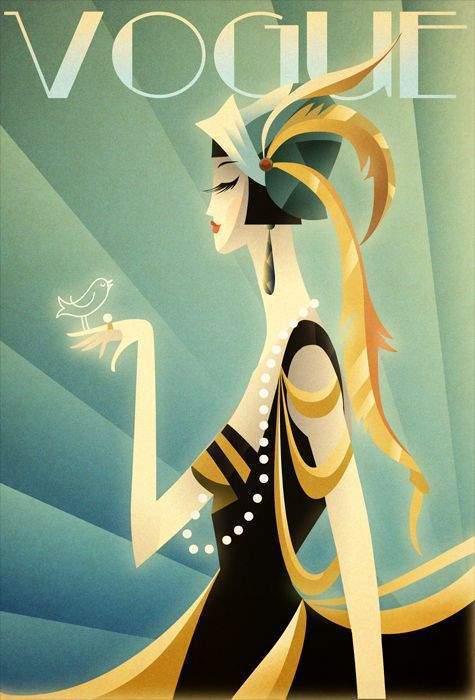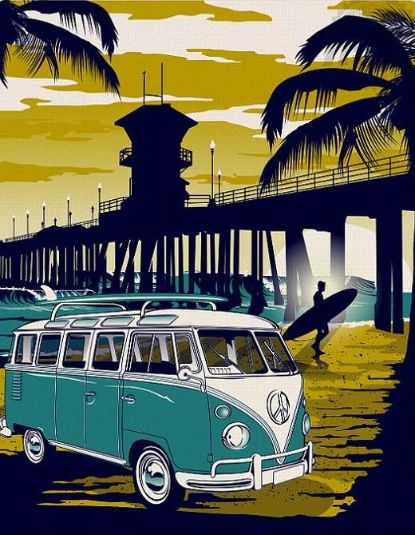HAVE WE LOST OUR ZEITGEIST?
By: Cheyenne Klaassen
Memories are something really fascinating. You can pick up your favorite ones, romanticize them, leave out all the uncomfortable aspects of a past time, and simplify them to the point where they can be comprised within a representative image. And that's exactly where the problem begins.
Whether we have experienced it or not, essentially every decade of the last century, particularly those most present in pop culture , can be summarized and grasped in an emblematic image. This image is usually composed of elements of fashion, art, technology, culture, style, and entertainment. It is inevitably superficial and partly stereotyped, but commonly identified as emblematic in the collective imagination.
From this result essentially two conclusions: the first is that each decade is characterized by a rather precise picture (which certainly varies from country to country). The second is that the image of each decade is clearly distinguished from the one before and the one after. Not only has a change occurred; there has been an evolution. Just compare an emblematic image from the 1950s; cars with fins and lots of chrome, jukeboxes, rock and roll music, pastel green and pink colors, with the typical picture of the 1970s: disco music, longer hair, and the predominant color combination of brown and orange. Although extremely simplified, each of these images has the magical power to pull us instantly into the decade, especially when accompanied by related music.
It is an image that we have contributed to shaping with our dreams, purposes, and needs, even before we experienced the time. It is a result, direct or indirect, of our previous choices. An image that we have generally experienced without full awareness, as is often the case with the present: one glance toward the past, another toward the future, and the present rushing by so frantically that we seldom have time to realize it is the present. Yet all of this constituted a spirit - a zeitgeist - and a nostalgia, forming a picture whose real depth and complexity we can only fully appreciate in retrospect.
Depending on whether someone has experienced a decade or not, everyone will associate individual elements with it, though always with some clear common denominators.
And today? What would an emblematic image of the decade between 2000 and 2009 consist of? And how would it differ from one representing 2010 to 2019? What styles and colors would define it? How would we distinguish the typical people of these times? In what ways could we identify ourselves?
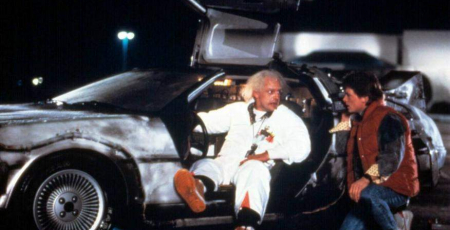
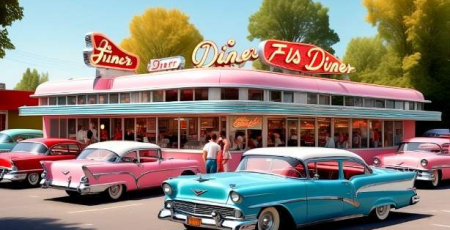
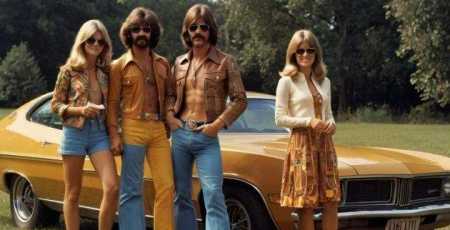

We obviously have a clear picture of past decades because each one is sharply distanced from our present. The first revivals of the 1980s began around the mid-2000s. They seemed so distant and separate from us because the 1990s lay in between, marked by the emergence of two technologies that changed everything: the internet and cell phones. It’s simple: there was a world before these, and a world after.
And anyway, the revivals of the 1990s followed shortly after.
So, what might constitute an emblematic image of the decade between 2000 and 2009, now almost 15 years past? And what about the following decade?
Wherever I have approached the topic, I have noticed that the most immediate answers for characterizing and identifying the last decades revolve predominantly around technological innovations, their use, and their social impact: smartphones, social media, then influencers, streaming. Beyond that, we might consider SUVs and, as an element of pop culture, perhaps superhero movies (not that we invented them in this century). We could possibly add some dragons from Game of Thrones, but I still prefer the images of Marty McFly and KITT for the 1980s.
A specification at this point: needless to say, these two decades have also been characterized by some significant phenomena of pop culture. To name a few of the most blatant: Harry Potter, the vampire genre, pirates, and so on. However, it is not the mere sum of stand-alone phenomena that constitutes a zeitgeist but rather their essence as it relates to their era.
Regarding what we are experiencing today, or have experienced in the past 20 years, shall we one day say (or wish) that it might come back into fashion? That it represented a clear evolution of earlier times? And, more importantly, that it formed the foundation for the evolution of times to come?
The difference between today and past decades does not lie in time itself but in the way we live it. Or perhaps it’s better to say: the way we consume it. We are subjected to enormously more stimuli than ever before; we also (and consequently) pay less and less attention to each of them, with few exceptions. We give increasingly less time to the elements of our time to establish themselves as a congruent and coherent zeitgeist. As a result, the image of our present appears much more blurred, indefinite. Time has become something to swipe away as soon as any of its elements fail to hold our interest.
We need to experience our time, not consume it. Even less should we resign ourselves to it.
Indeed, we should not resign ourselves to the idea that "we were better when it was worse." (…Remember that to record your favorite song, you had to wait for it to come on the radio and be ready to press REC + Play if you couldn’t find the record or cassette in the store.) Instead, we should ask whether these are the options of choice we created for ourselves - or at least desired.
Why should any of this matter? Because we have always imagined the future from the perspective of the present. (In the 1950s, imagining the year 2000, we thought most vehicles would fly, precisely because the moon had become attainable.) But a blurred and fleeting image of the present is likely to lead to an equally vague vision of the future, in which fears, rather than optimism, may more easily take root.
Obviously, it’s not simply a matter of summarizing each decade in an image. Many cultural phenomena were consequences of sociopolitical events. To stay with the 1950s, for example: the conquest of the moon (and perhaps what lay beyond) and the emergence of a new identity for teenagers. The differences between one decade and another - whose separations are clearly not so fluid - were expressions, in all their forms, of society, its frictions, and the will for new ideas to erupt. These differences represented changes whose time had become ripe, much as we have seen in recent years with #MeToo and movements promoting diversity, equity, and inclusion.
Perhaps it is because we are flooded with stimuli, which we grasp with an increasingly shorter attention span (just as the attention spans of those from whom we seek attention are also short). Perhaps it is because, in recent years, we have been confronted with phenomena - and their consequences - that are unprecedented in the memory of most of us (e.g., COVID-19). Perhaps it is because we have grown a little too accustomed to accepting so-called alternative truths, and sometimes we don’t bother to express our most authentic and essential beliefs. Or maybe it’s because today it seems that more people are speaking than listening, with everyone competing for their own share of attention.
Do we really want the image of this decade to be an influencer taking a selfie in front of an electric SUV? Have we left this decision entirely to the algorithm, ready to swipe away if we don’t like the result - or get bored?
I think the image we will create of our time will inevitably be less distinct and more nuanced than the emblematic pictures of the last century’s decades. Let’s face it: it’s less simple. But it may turn out to be an image much richer in expressions and impulses, in contrasts and, therefore, in individualities. More multiethnic, not reduced to just a couple of symbolic colors. The challenge lies in giving each color its rightful place in our time and embracing every nuance as a coherent element. Yes, it is a more complex picture, especially to live through and comprehend in the present. But, like great masterpieces of art, by revisiting it over and over, everyone will discover deeper facets of our time with which to identify as they look back.
The complexity of our times is not the real problem. Their vagueness is. To create a clear picture of our present, we first need a correspondingly clear awareness of it. From a perception of the present that is too ambiguous and fleeting, distorted visions of the future are likely to arise - along with their flawed foundations.

